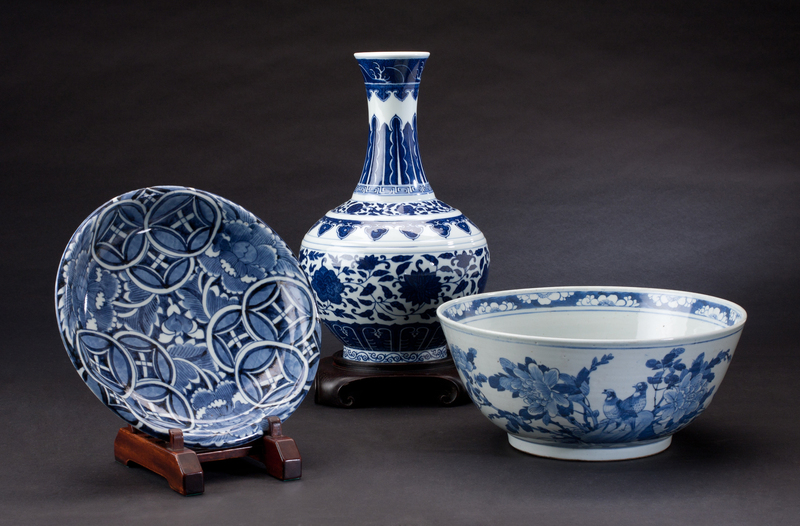Store Your Sofa Effectively: Expert Tips Unveiled
Posted on 17/05/2025
Store Your Sofa Effectively: Expert Tips Unveiled
Are you planning to move, redecorate, or simply protect your beloved sofa from wear and tear? Storing your sofa effectively is crucial to preserving its quality, structure, and appearance. In this comprehensive guide, we'll reveal expert tips for sofa storage, ensuring that your furniture remains in pristine condition--no matter how long it waits in storage. Whether you're storing a vintage couch, a sectional, or a modern loveseat, these industry insights will help you make the best choices for safeguarding your investment. Read on to uncover the secrets of sofa storage mastery!
Why Proper Sofa Storage Matters
The way you store your sofa can significantly impact its longevity and usability. From dust and moisture to pests and physical damage, several factors can deteriorate your sofa while in storage. Here's why it's crucial to store your sofa correctly:
- Prevents Fabric Deterioration: Proper storage averts fading, mold, and unpleasant odors.
- Maintains Structure: Ensures the frame and cushions remain supportive and unchanged over time.
- Protects Against Pests: Shields material from insects, rodents, and other pests.
- Increases Lifespan: A well-stored sofa will serve you longer and look newer.
Now, let's delve into the most effective strategies to store your sofa with care.

Step-by-Step Guide: How to Store a Sofa Effectively
1. Clean Your Sofa Thoroughly
Preparation is key when it comes to storing your sofa. Dirt, crumbs, and moisture can turn into mold or attract unwanted pests if left unattended. Always start by cleaning:
- Vacuum: Use an upholstery attachment to remove dust, pet hair, and dirt from all surfaces, including crevices and beneath cushions.
- Spot Clean: Address stains or spills using the fabric manufacturer's recommended cleaning method.
- Deodorize: Sprinkle baking soda, leave for 15-20 minutes, and vacuum up to neutralize any lingering odors.
Allow the sofa to air dry completely before proceeding to the next step.
2. Disassemble If Possible
Disassembling your sectional or sofa makes transport and storage easier, helps prevent accidental damage, and saves space.
- Remove Cushions and Pillows: Pack them separately in airtight bags.
- Unscrew Legs: Wrap hardware in labeled plastic bags and tape them to the underside of the sofa so nothing gets lost.
- Disassemble Modular Sections: If your sofa is modular, take apart each section for optimal storage.
3. Protect the Upholstery
Upholstered sofas require special protection to ward off dust, dirt, and critters. Here's how:
- Wrap in Soft Blankets or Cloth: Avoid plastics directly on the fabric to prevent trapping moisture.
- Use Sofa Covers or Sheets: Breathable materials allow air circulation while providing a barrier against debris.
- Optionally, Use Plastic Wrap: Only for non-fabric sections, such as wooden or metal legs, to shield from moisture.
Pro tip: Never wrap a sofa in plastic for long-term storage as this can cause condensation and mold growth.
4. Choose the Right Storage Environment
The environment in which you store your sofa is just as important as the way you wrap it.
- Climate-Controlled Storage: Select a storage unit with regulated temperature and humidity to prevent warping, mold, and mildew.
- Clean and Dry: Ensure the storage location is well-ventilated, free from dampness and leaks.
- Raised Flooring: If possible, place your sofa on wooden pallets or blocks to protect it from water damage during unexpected flooding.
Optimal conditions are generally between 55-75?F (13-24?C) and around 50% relative humidity.
5. Positioning Your Sofa Correctly in Storage
Proper positioning ensures your sofa retains its original form and reduces the risk of deformation or pressure points.
- Store It Upright: Always position your sofa as it would naturally sit in your home. Never store a sofa on its side or stack items on top of it--this leads to irreversible warping or dents.
- Leave Space: Maintain at least a few inches of space between the sofa and the storage unit walls on all sides to enable proper airflow.
- Don't Overcrowd: Avoid placing boxes or heavy objects atop the sofa, which can crush cushions or mar the frame.
6. Insure and Check Periodically
Not all storage units are equal: unexpected leaks, pest infestations, or other issues do happen. Insure your furniture with a policy that covers items during storage. Inspect your sofa every few months for signs of damage, pests, or humidity issues--it's easier to address problems early!
Expert Tips for Different Sofa Types
Storing Leather Sofas
- Condition the Leather: Apply a high-quality leather conditioner before storage to keep the material supple.
- Avoid Plastic Wrap: Leather needs to breathe; use cotton covers instead of plastic.
- Climate Control Is Non-Negotiable: Humidity can ruin leather--control both temperature and humidity.
Storing Fabric Sofas
- Thorough Dry Cleaning: Get the fabric professionally cleaned to eliminate all contaminants.
- Breathable Covers: Use only natural-fiber sheets or blankets for protection.
- Desiccant Packs: Place silica gel packets under the covers to absorb excess moisture.
Storing Sectionals or Modular Sofas
- Label Components: Use masking tape to number all the sections and corresponding hardware.
- Stack with Care: If you must stack parts, separate them with soft blankets or bubble wrap.
- Packing Cushions: Store large cushions vertically in specialty bags to retain their shape.
Common Mistakes to Avoid When Storing a Sofa
- Wrapping Directly in Plastic: Trapping moisture equals mildew--always use breathable materials first.
- Ignoring Climate Control: Basements and garages are often too damp or cold.
- Storing in Direct Sunlight: UV rays cause fading and cracking--keep sofas away from windows.
- Placing Heavy Items On Top: Causes permanent indentations and frame strain.
- Skipping Regular Checks: Neglect can lead to unnoticed pest infestations or water leaks.
Additional Tips for Long-Term Sofa Storage
- Use Pest Repellents: Place lavender sachets or cedar blocks inside the storage area to repel insects naturally.
- Elevate All Parts: Not just the sofa body--ensure any detached legs, cushions, or components are raised and ventilated.
- Re-tighten Screws and Bolts: Before reassembling after storage, check for loose hardware and fix as needed.
- Rotate Position: If the sofa will be in storage for over a year, change its orientation every six months to avoid pressure marks.
How to Prepare Your Sofa for Moving into Storage
What You'll Need:
- Vacuum cleaner and upholstery brush
- Soft cloths or blankets
- Furniture covers
- Plastic zip-top bags for hardware
- Bubble wrap (for delicate details)
- Wooden pallets (optional)
- Permanent marker and masking tape
Packing Checklist
- Photograph your sofa: Take pictures before disassembling for easy reassembly.
- Document all hardware and small parts.
- Label everything.
- Double-check for leftover moisture after cleaning.
- Remove all personal items and vacuum compartments.

Frequently Asked Questions About Sofa Storage
How long can you store a sofa safely?
With correct techniques, a sofa can stay in storage for several years without declining in quality. Just make sure to use a climate-controlled environment and inspect periodically.
Is it safe to store a sofa in a garage?
Garages are rarely ideal: they're often humid, exposed to temperature fluctuations, and prone to pests. A climate-controlled self-storage unit is the best bet for effective sofa storage.
Can you shrink-wrap a sofa for storage?
Shrink-wrapping is not advisable for long-term storage, especially for fabric or leather. It traps moisture, potentially causing mildew and cracking.
Conclusion: Preserve Your Sofa the Smart Way
Protecting your sofa while in storage isn't complicated, but it does require careful planning. By cleaning, disassembling, and wrapping your furniture properly--and by choosing a secure, climate-controlled space--you'll store your sofa effortlessly and effectively. Avoid the common pitfalls and use these expert tips to ensure your sofa is as beautiful after storage as the day you packed it away.
Your sofa is an investment--don't let improper storage shorten its life! For more home care advice and storage solutions, explore our latest guides, and keep your furniture looking its best for years to come.







